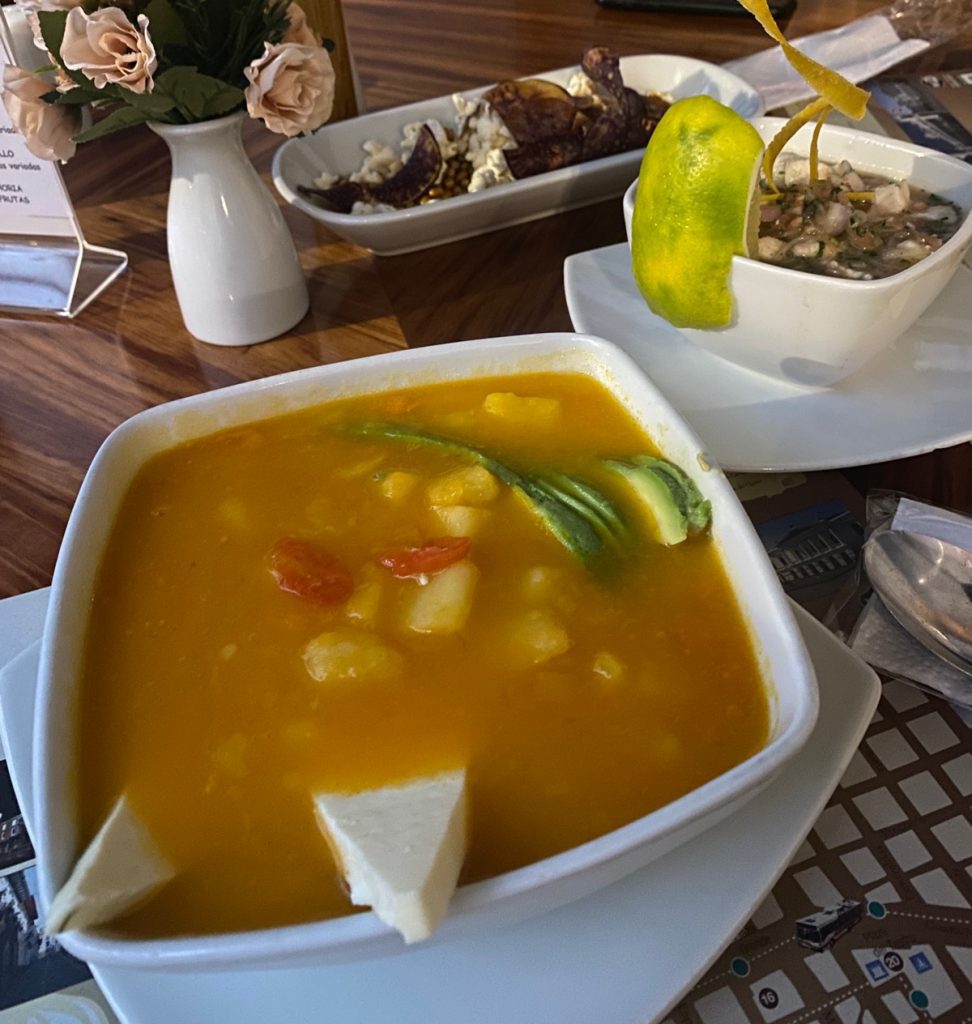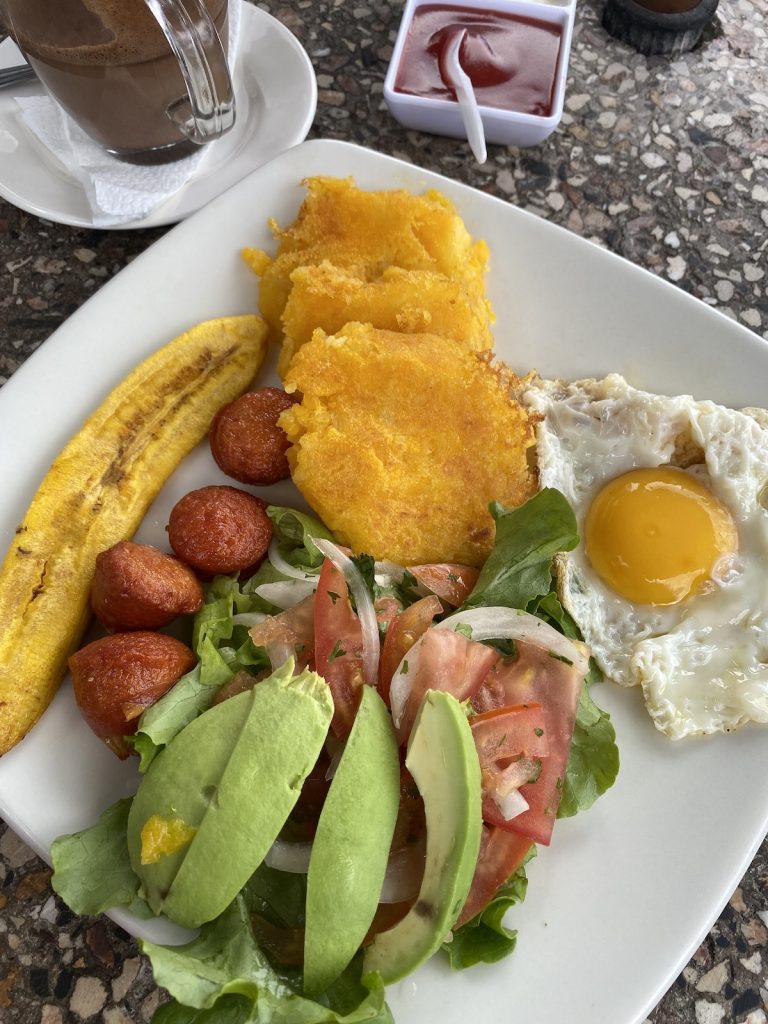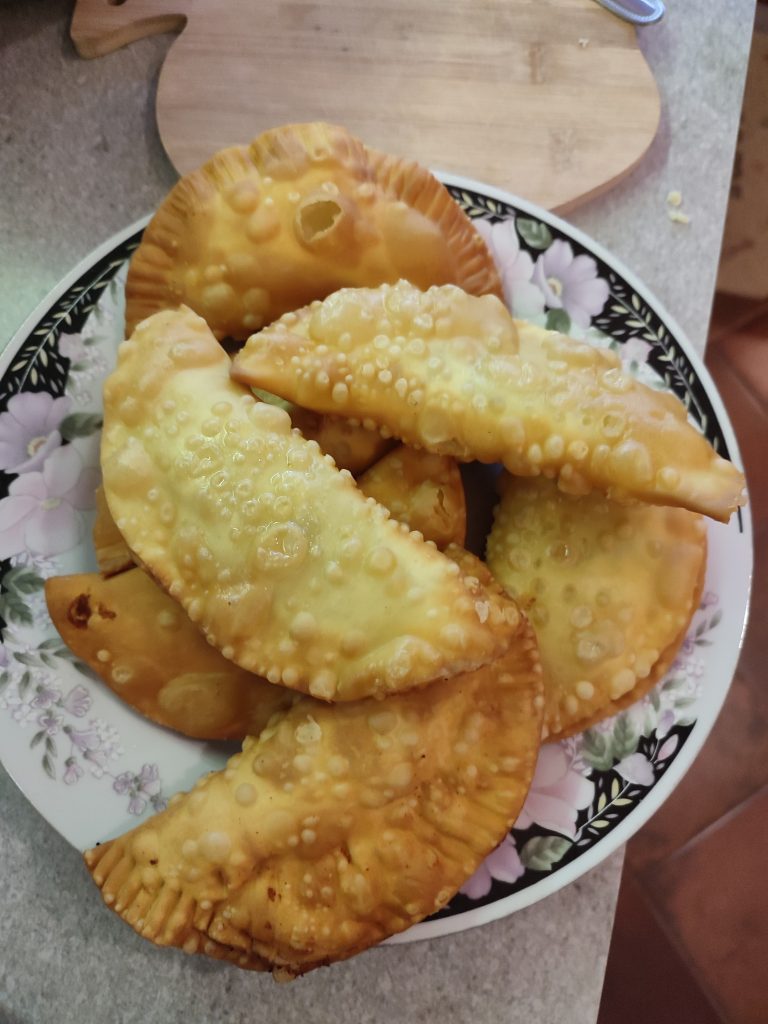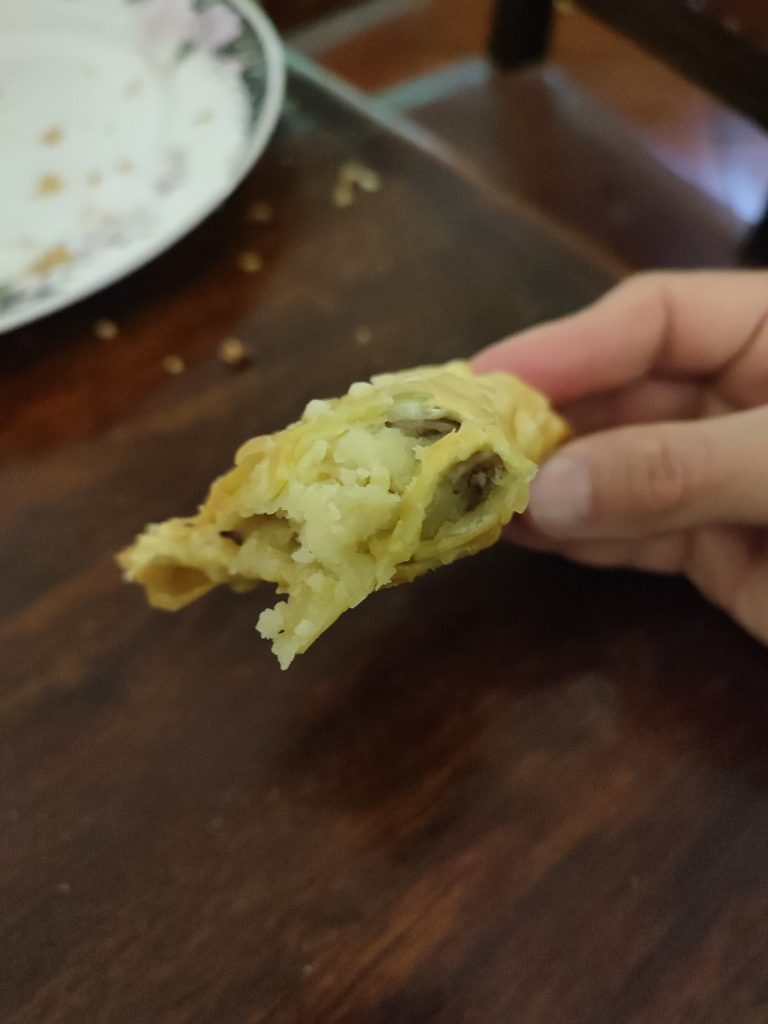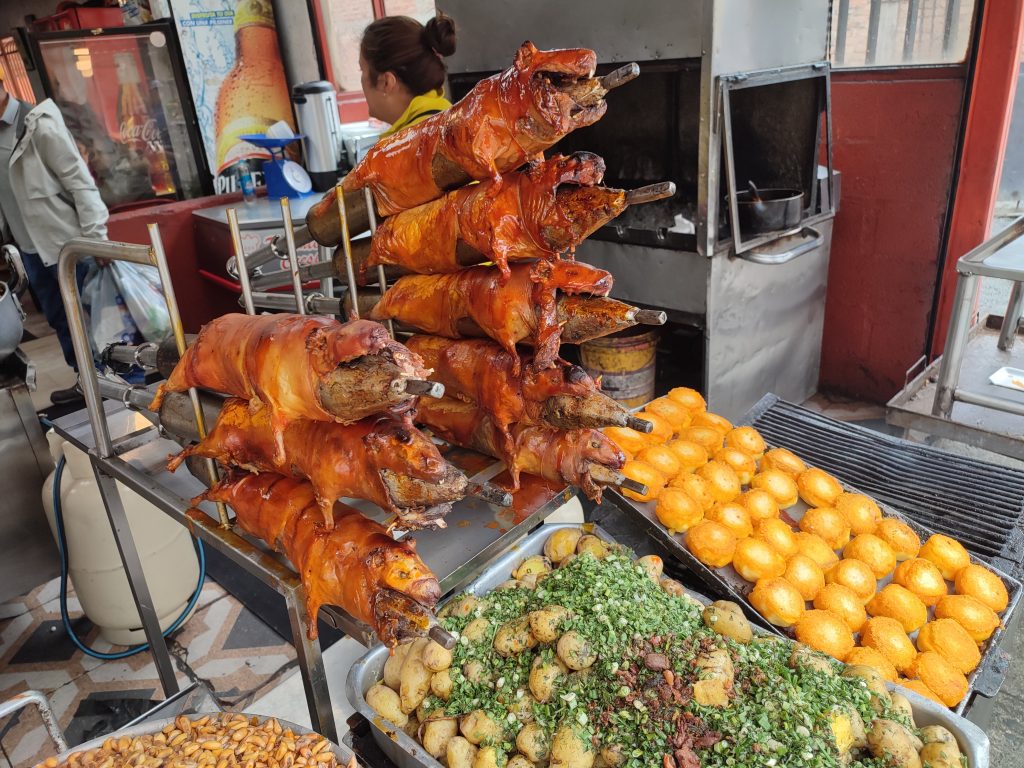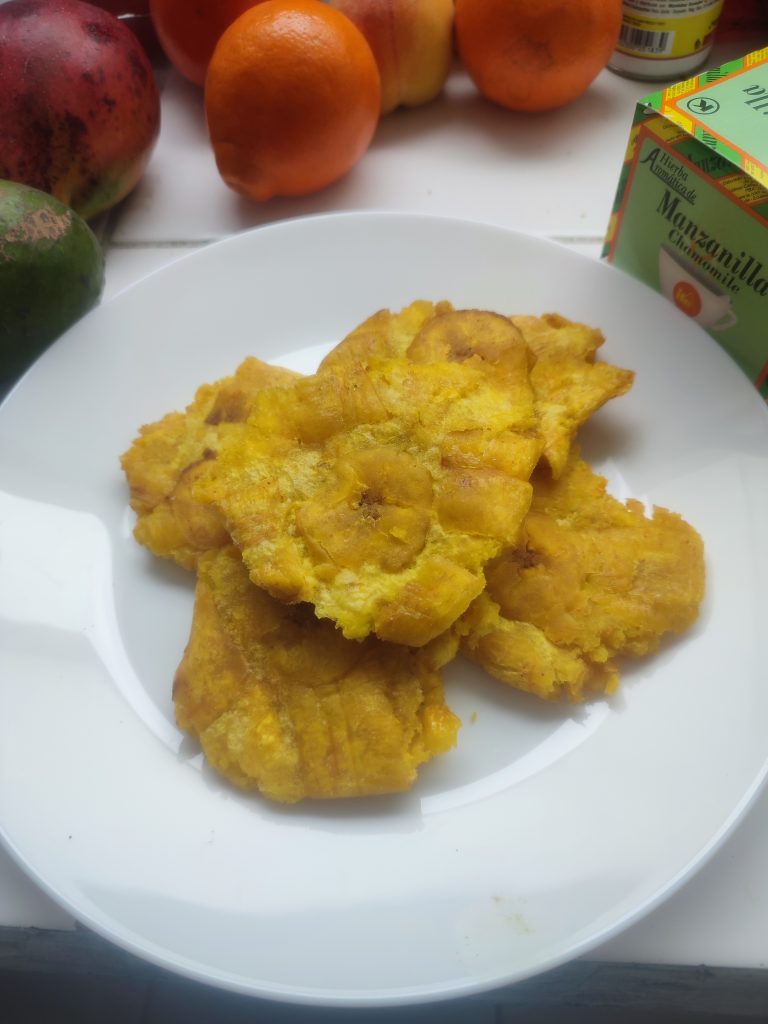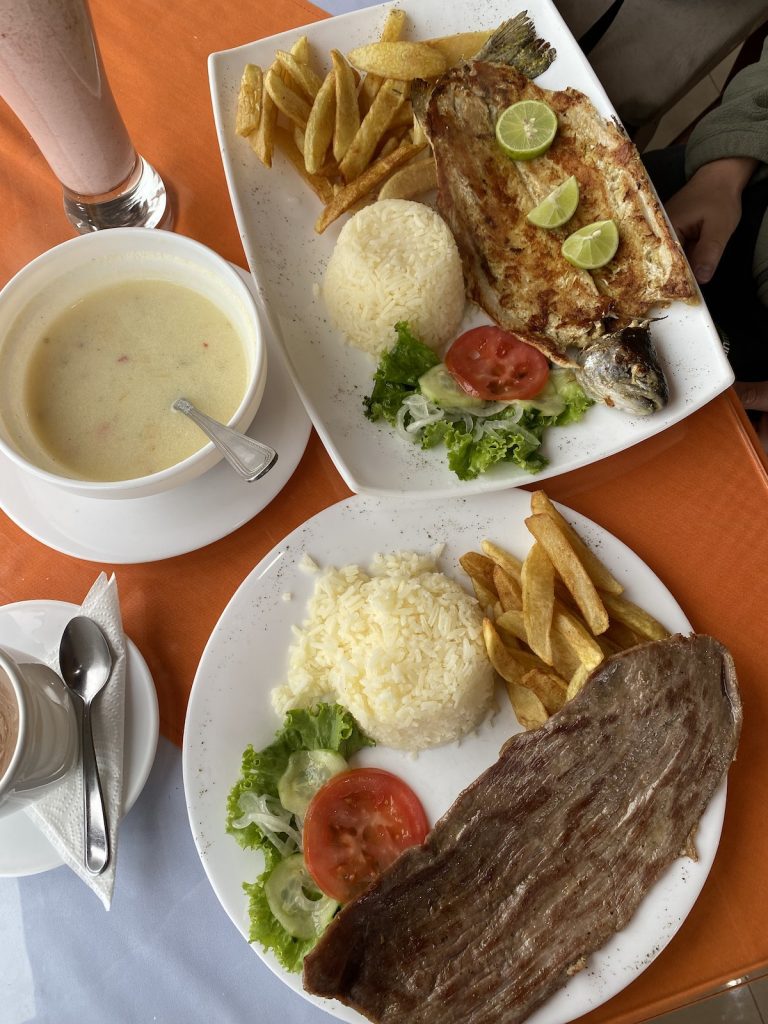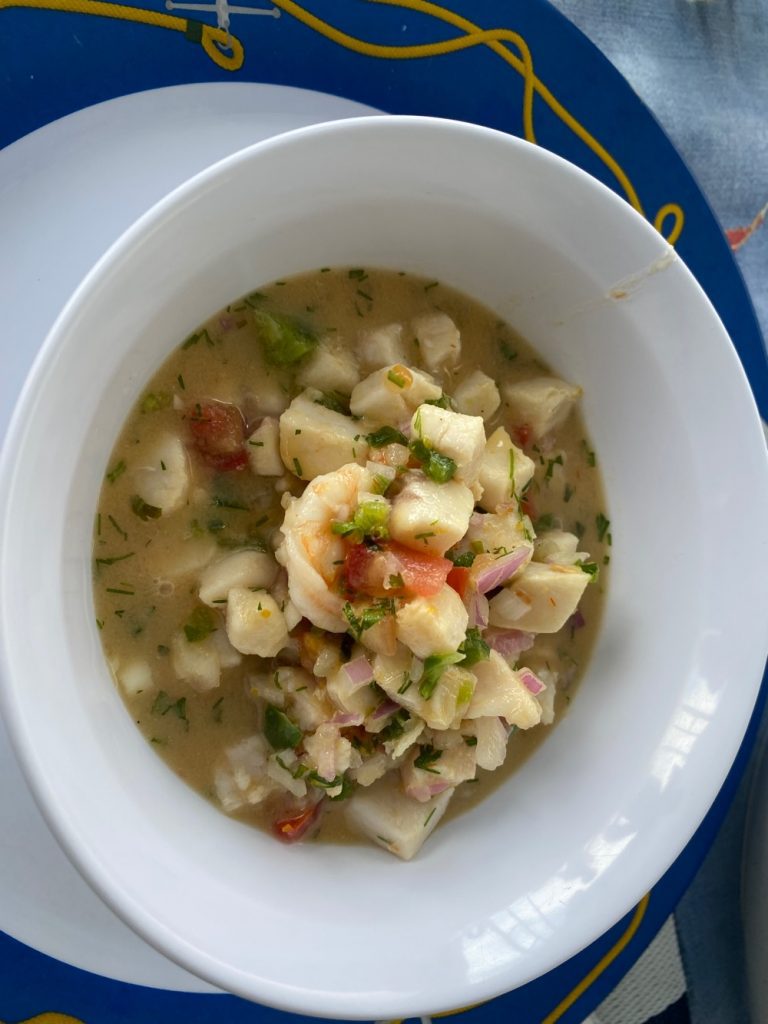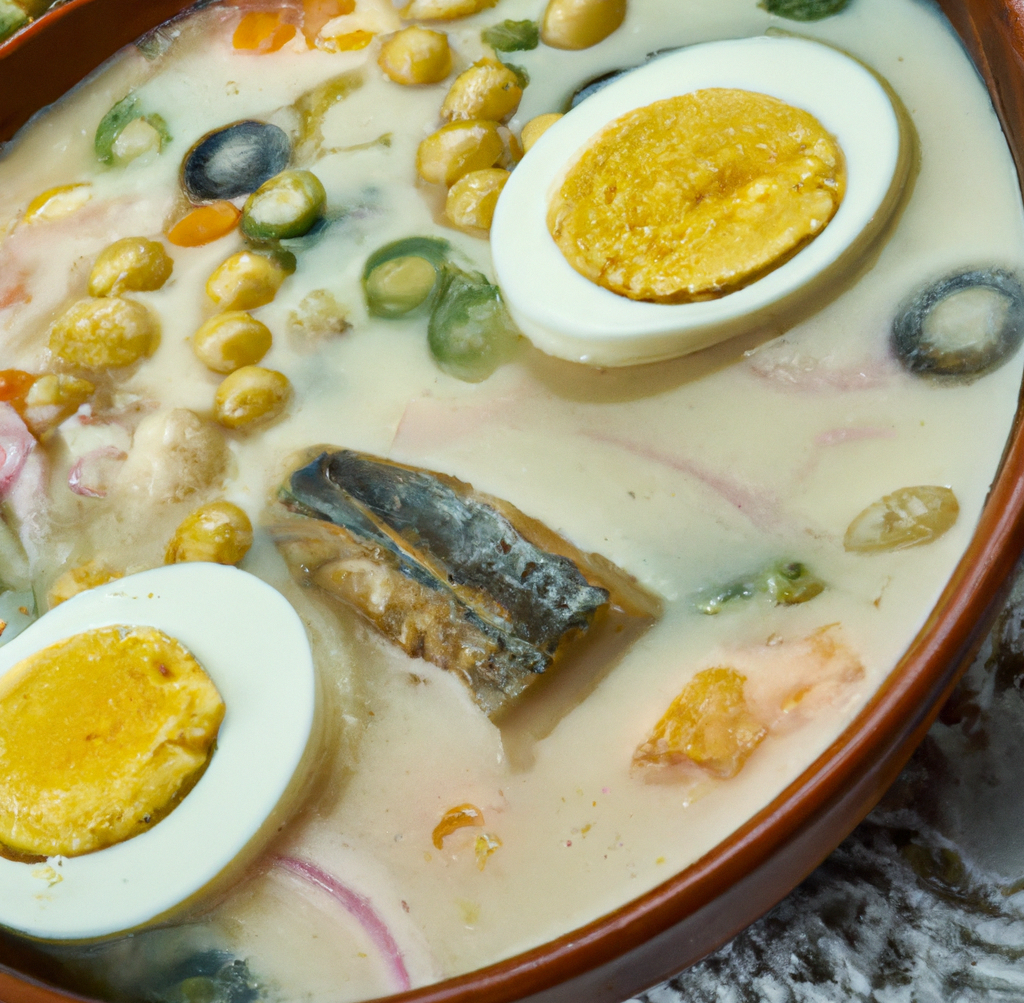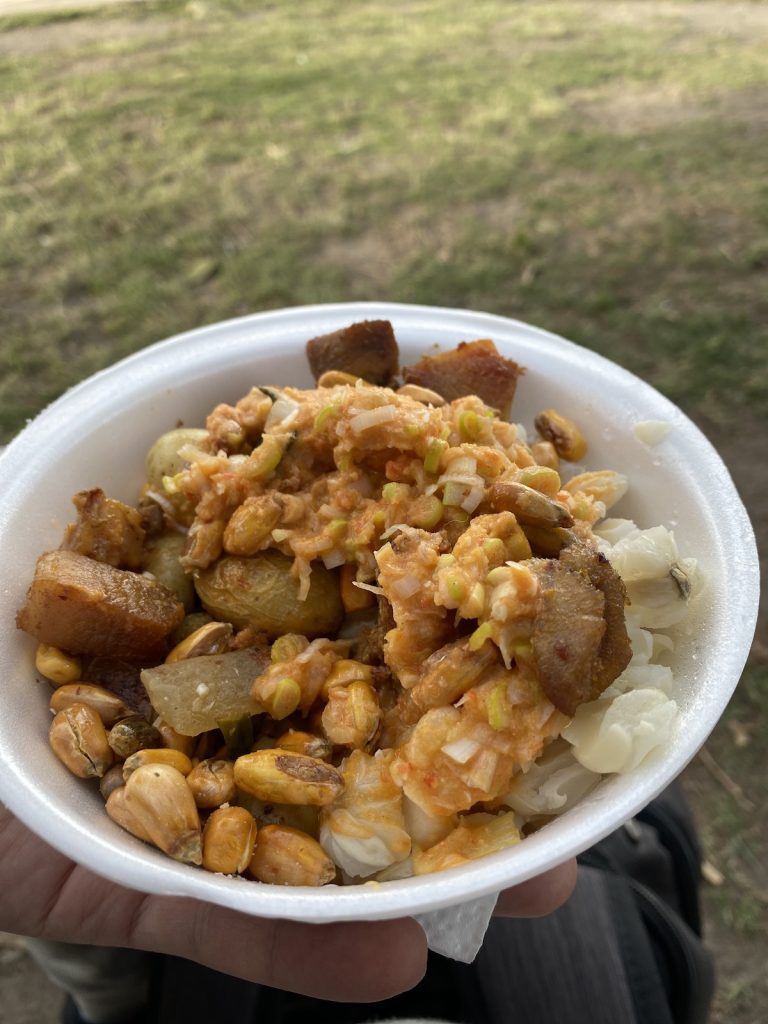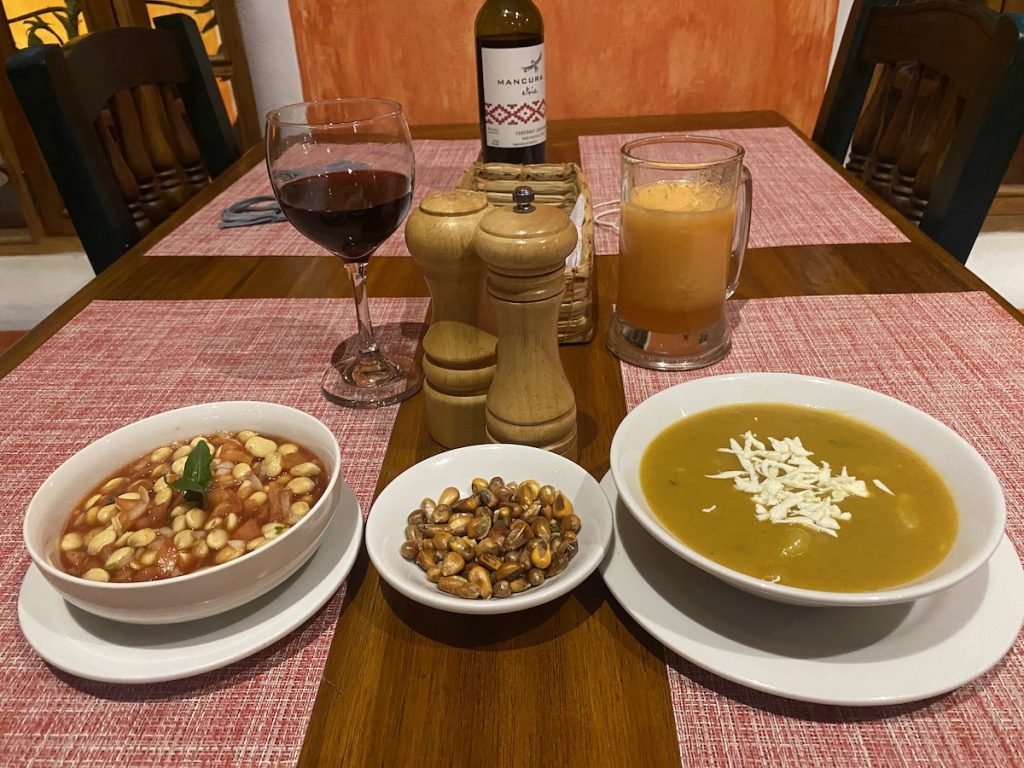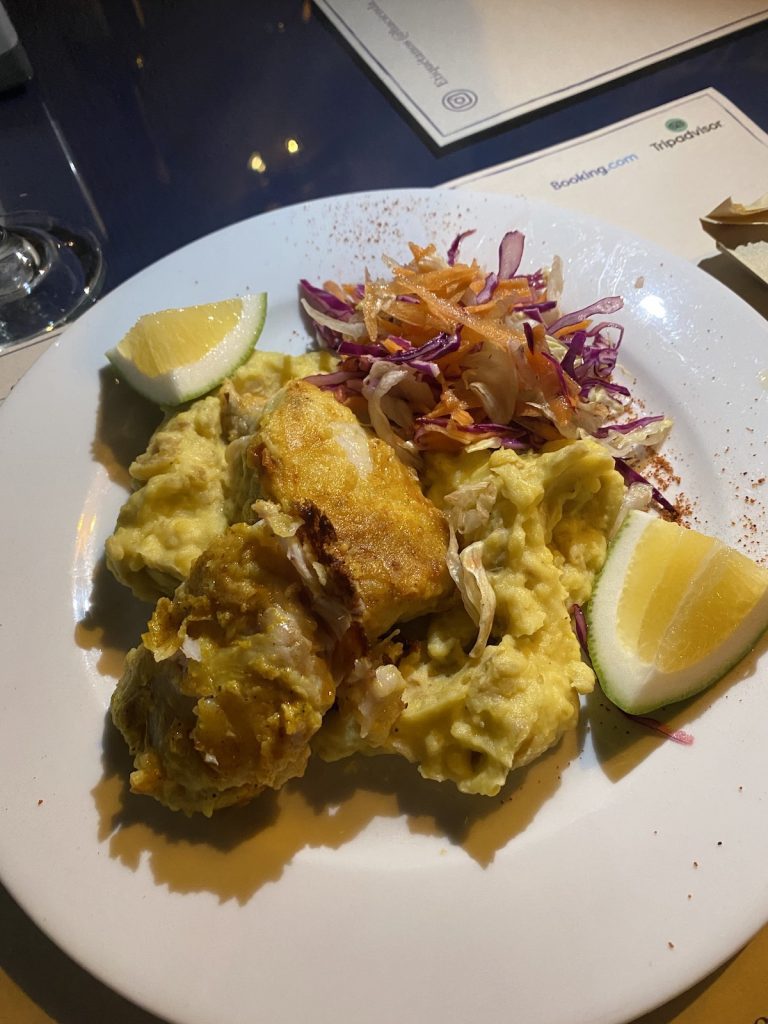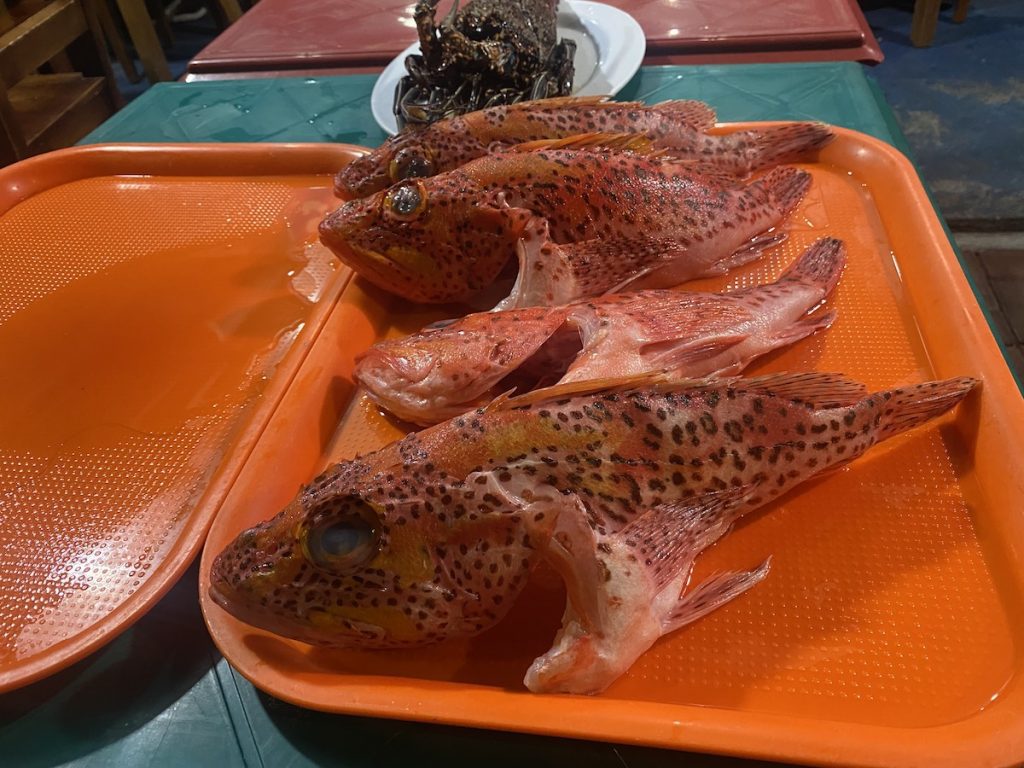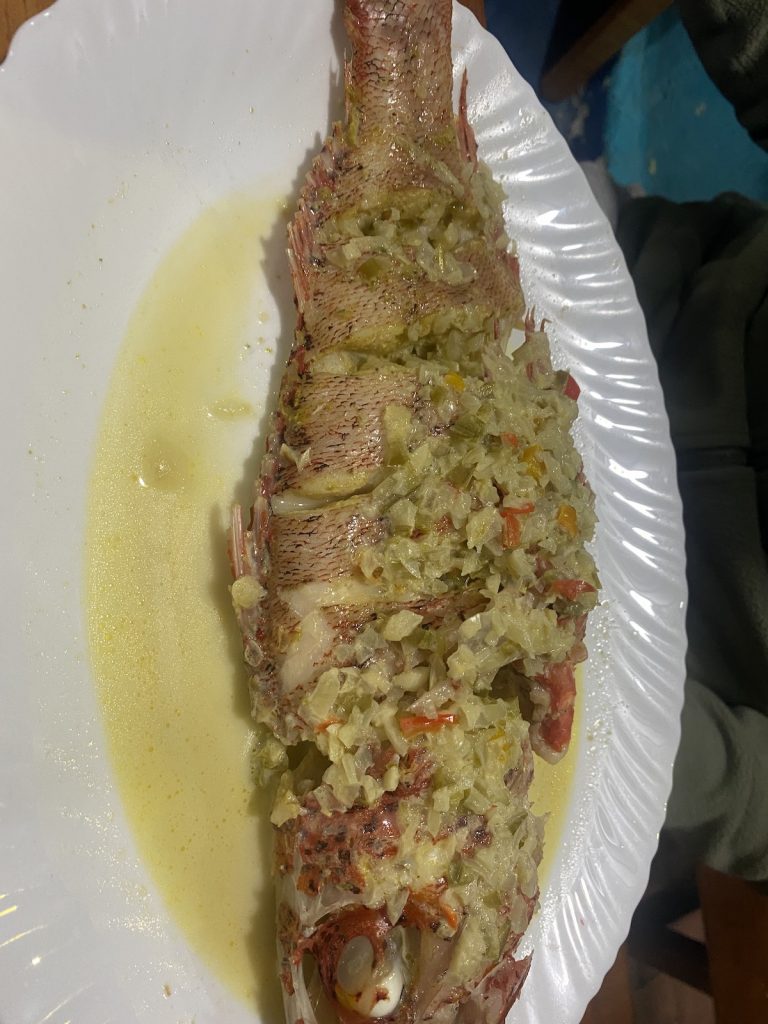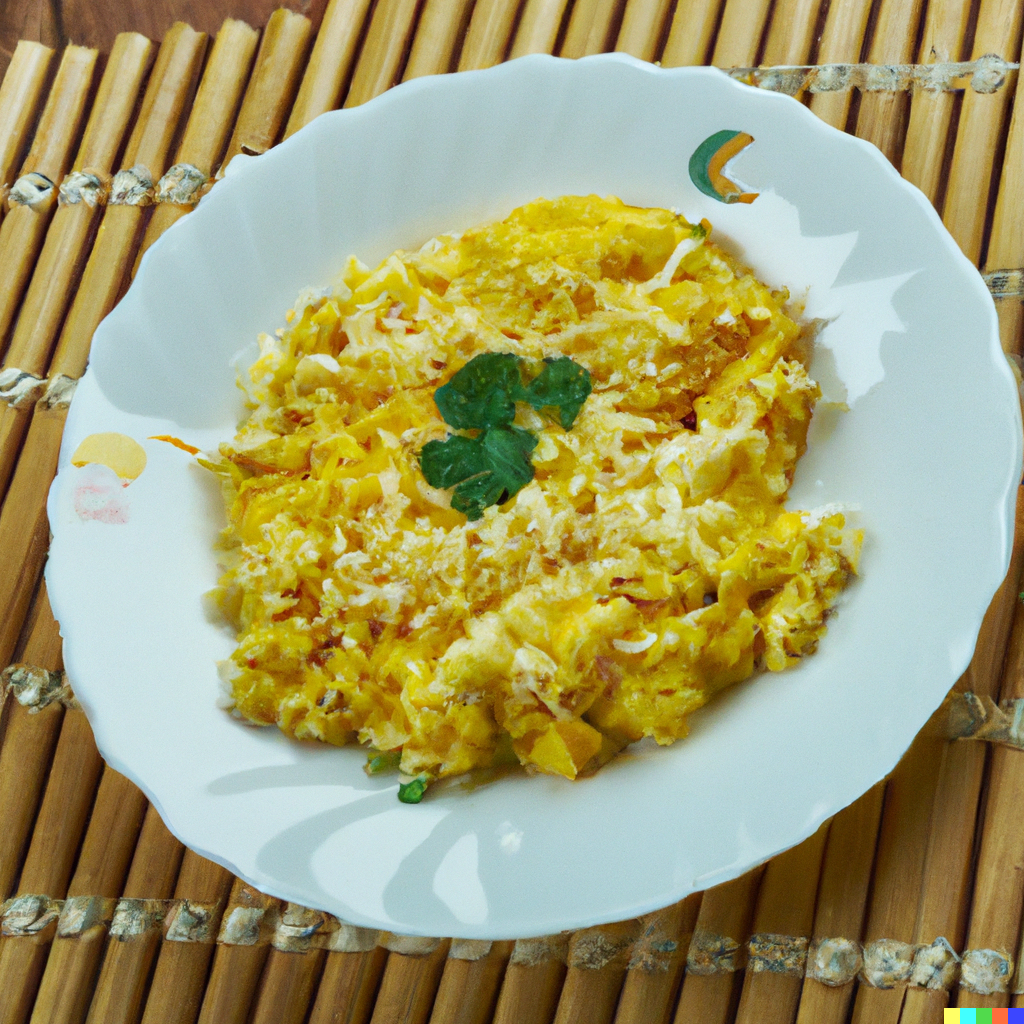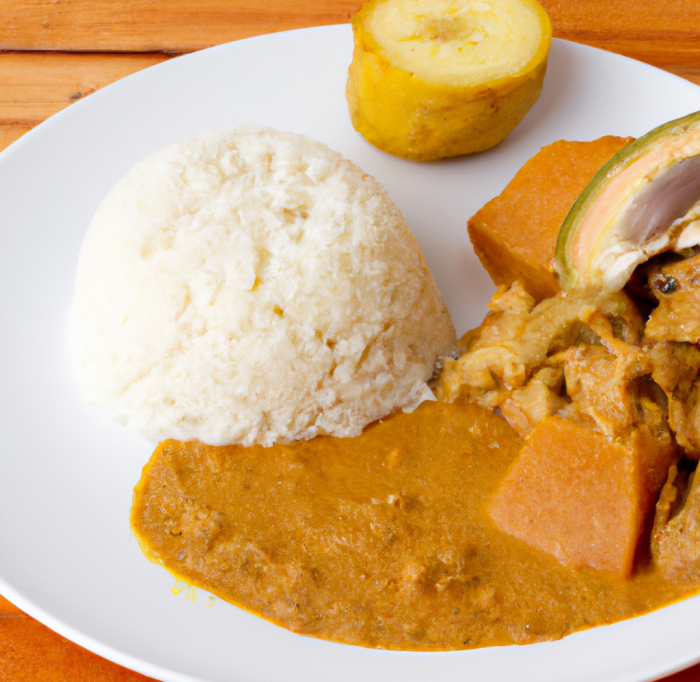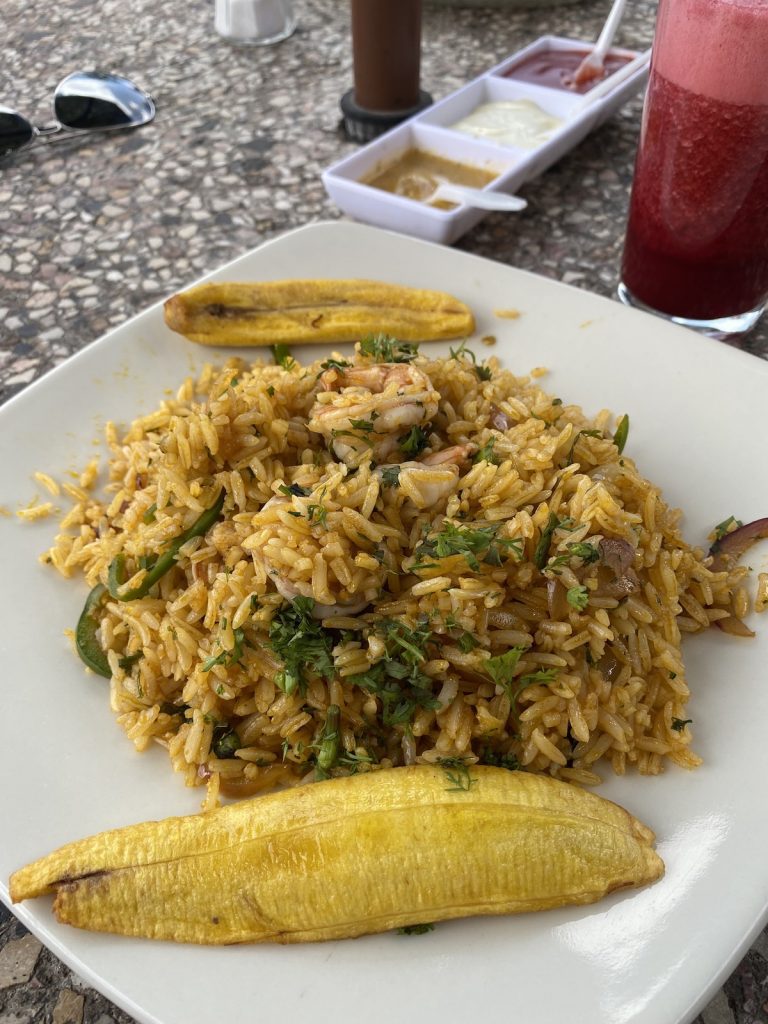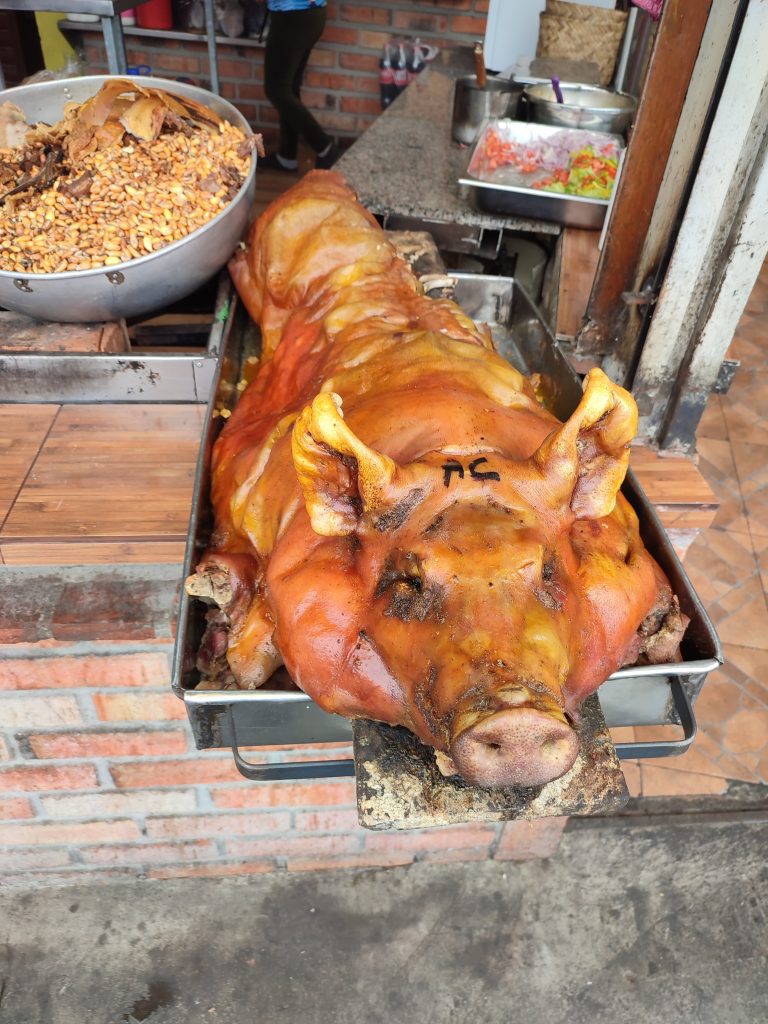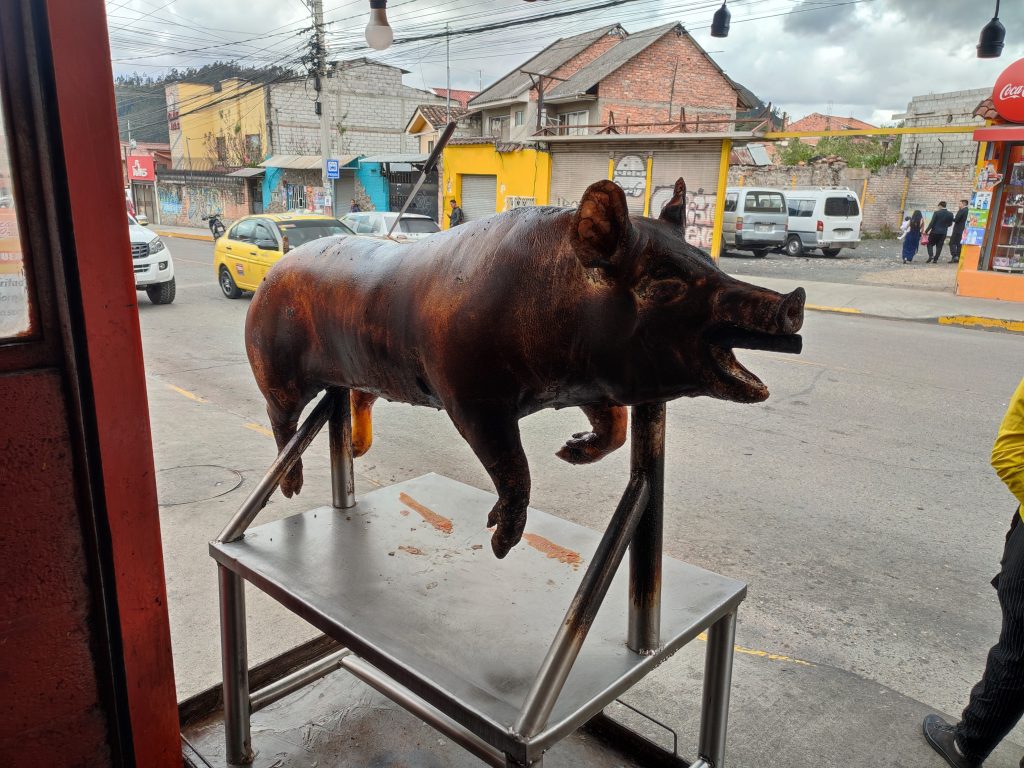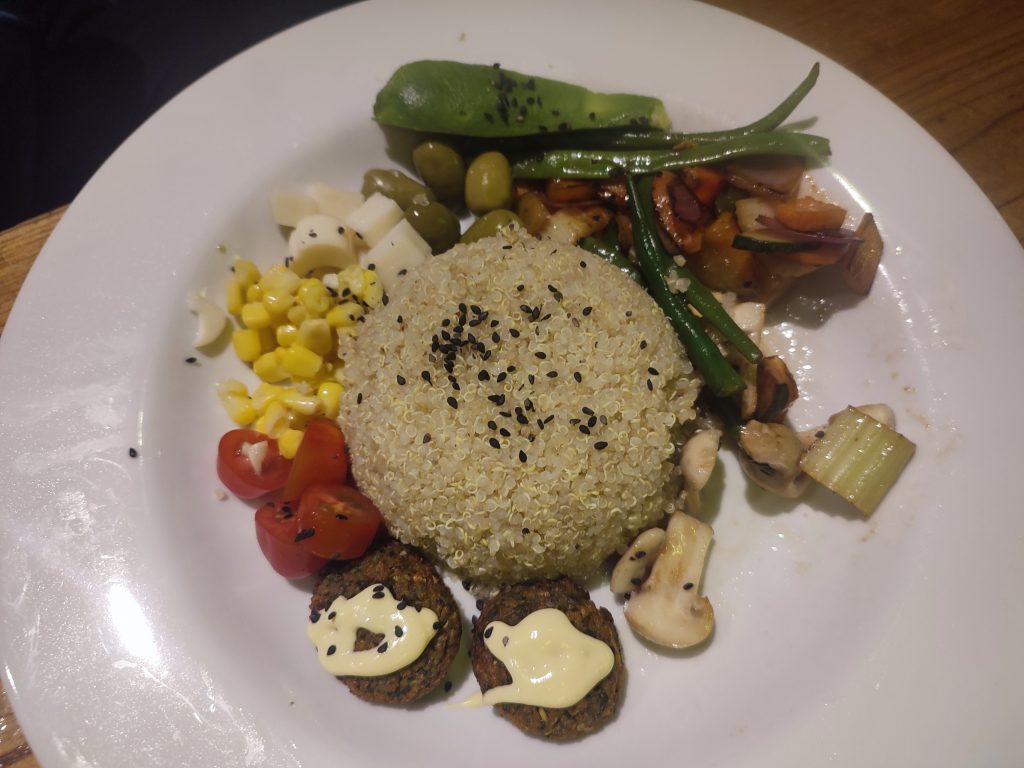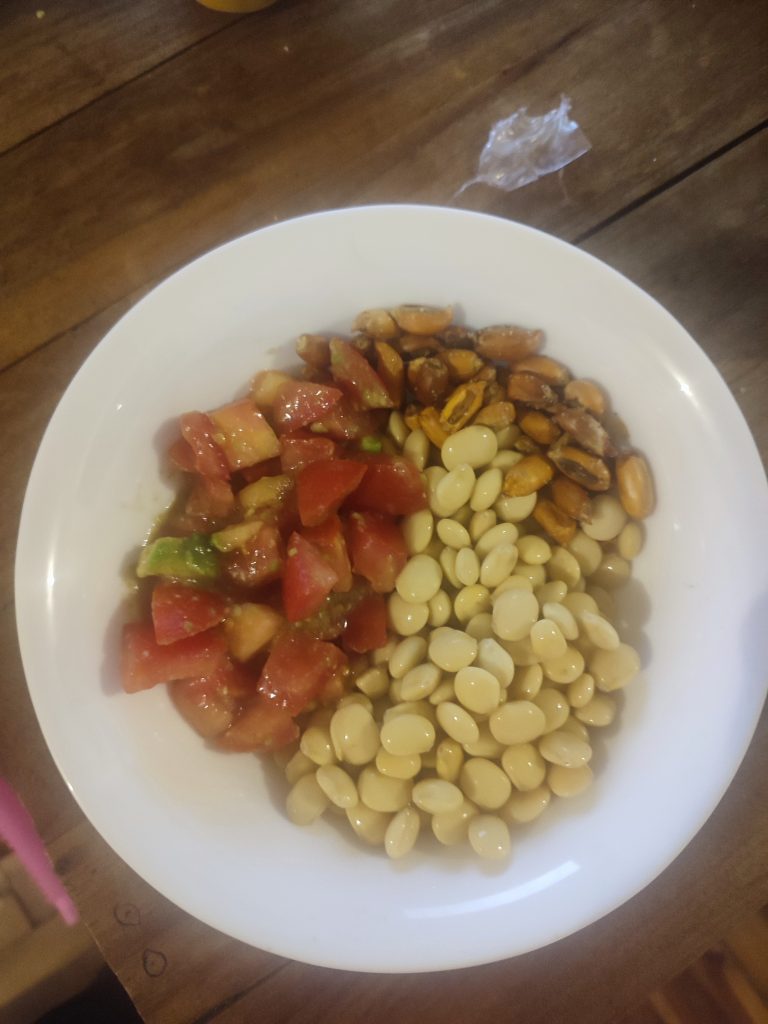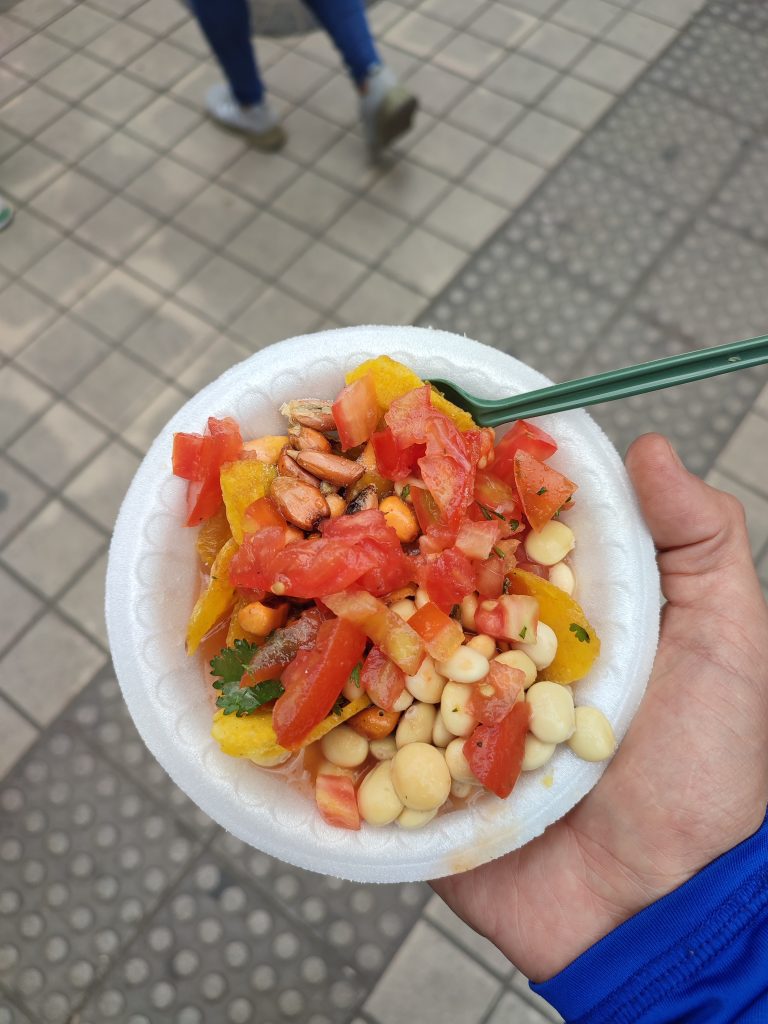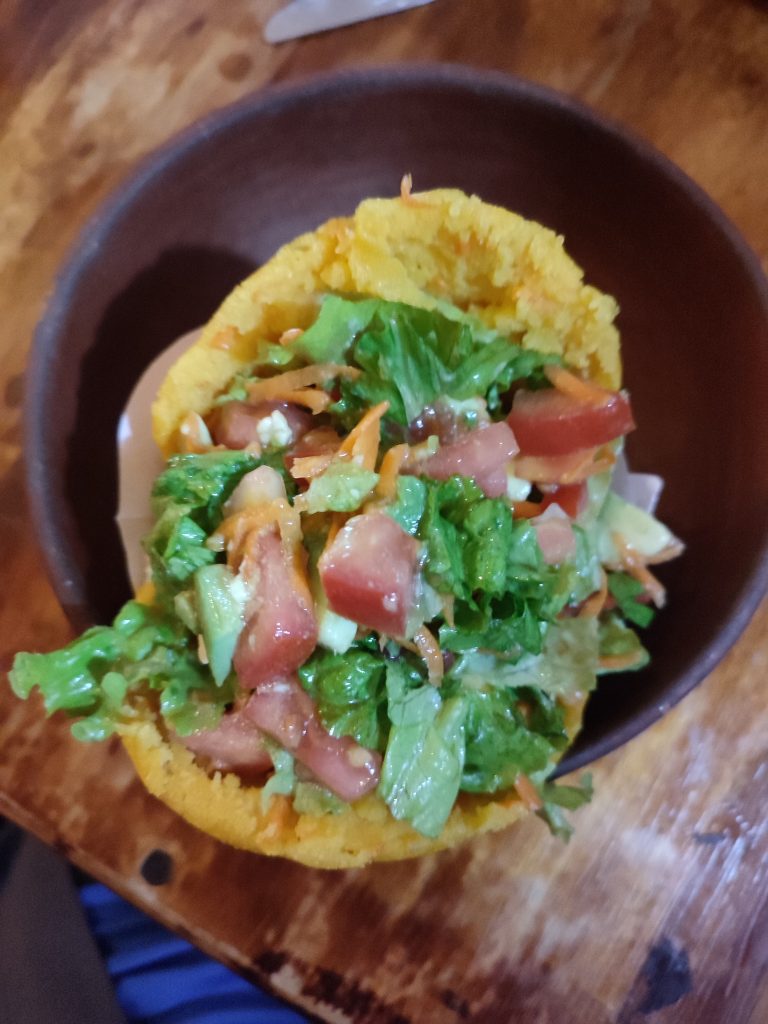Ecuador is not only geographically diverse but also a culinary wonder. Ecuadorian cuisine stands out as one of the most fascinating in the world.
As we dive into this introduction to traditional Ecuadorian food, you’ll notice that the country’s rich diversity shines through in its wide array of delicious dishes.
Looking back, discovering Ecuador’s food scene required local knowledge – from finding authentic restaurants to knowing regional specialties. Skip the uncertainty I faced and get a FREE personalized Ecuador trip quote from my trusted local experts who know exactly where to find the best local dishes. Your booking helps support both this blog and local Ecuadorian communities.
Table of Contents
Locro de Papa
“Locro” is a hearty, thick stew enjoyed throughout South America’s Andean region. While the ingredients vary by country, in Ecuador, locro de papa—a potato and cheese soup—is especially popular.
Made with local potatoes, onions, garlic, fresh cheese (queso fresco), milk, and spices, the ingredients are simmered together until they meld into a creamy soup. Just before serving, cheese is added, melting beautifully into the rich broth. You’ll find locro de papa on many menus in Quito, often served as a first course with avocado slices and a side of aji spicy sauce for an extra kick.
Llapingachos
Llapingachos are a delicious staple of Ecuadorian Highland cuisine, dating back to pre-Hispanic times. The name comes from the Kichwa word llapina, meaning “to crush into a soft, mushy consistency.”
These savory, fried potato cakes are made with mashed and boiled potatoes mixed with onions and other seasonings, then stuffed with cheese. They’re cooked on a griddle until the exterior turns golden and crispy, while the inside remains soft and creamy.
Commonly enjoyed for breakfast or lunch, llapingachos are served with a variety of sides like chorizo, avocado, fried eggs, and salad, and topped with salsa de maní (creamy peanut sauce). We had our first taste of these delicious potato cakes while visiting Ciudad Mitad del Mundo—the Middle of the World!
Empanadas
The most traditional Ecuadorian empanadas are empanadas de viento, or “fried cheese empanadas.” Filled with cheese (and sometimes sliced onions), they’re fried until golden and crispy, then served with a dusting of sugar for a sweet-savory twist. You’ll find these tasty treats mainly on Ecuador’s mainland.
Many restaurants now offer large empanadas de viento that are perfect for sharing, though the smaller, appetizer-sized ones are still widely enjoyed.
Cuy Asado
Cuy asado, or roasted guinea pig, is a traditional dish that I had to try while in Ecuador. Cuy is prepared in various ways—roasted, grilled, or fried—and is a well-loved food here. While guinea pigs are often kept as pets in North America, in the Andes, they’re considered livestock and have long been raised for their meat, which many compare to rabbit.
Though it might seem unusual, my wife and I found that cuy is an important part of Ecuadorian cuisine and culture. Like any traditional dish, we believe you should give it a try for the full Ecuadorian experience. Some of the best places to taste cuy are in Cuenca, where it’s popular in local markets and restaurants.
Patacones (Fried Plantains)
Churrasco Ecuatoriano
One of the most popular dishes we enjoyed in Ecuador was churrasco. This flavorful meal features thin steaks, either grilled or sometimes fried with onions and peppers, and topped with a crispy fried egg. It’s typically served with rice, French fries, ripe plantains, and a fresh salad.
After our exhausting hike at Quilotoa Lake, we stopped by a local village restaurant to try churrasco, and it turned out to be one of the best meals we had in Ecuador. It was the perfect, hearty dish to refuel after a long day!
Fish Ceviche
Plan perfect trip to Ecuador & Galapagos
I spent countless hours researching everything about traveling to Ecuador, and I created this blog for fellow travel enthusiasts who want the best, most reliable information. But if you want to save time, we’ve partnered with the top local agency to plan your dream trip.
Ecuadorian fish ceviche is made with any white fish that’s fresh enough for sashimi-grade curing in a blend of lime juice, garlic, and hot peppers. Once the fish is cured, it’s mixed with marinated cilantro, tomatoes, bell peppers, and red onions, adding a refreshing crunch and vibrant flavor.
It’s often served with hot sauce and a variety of sides like fried plantain chips (chifles) and toasted corn nuts, making it a flavorful, must-try dish that’s perfect for a taste of Ecuadorian coastal cuisine.
Fanesca
If you’re visiting Ecuador in March or April, you might have the chance to try fanesca, a traditional Easter soup unique to Ecuador. Made with bacalao (dried and salted fish) and a variety of other ingredients, it’s served only once a year to celebrate Easter and Lent, making it a highly symbolic dish in Ecuadorian cuisine.
This hearty soup combines bacalao boiled in milk with a mix of local ingredients, including sambo (figleaf gourd), zapallo (pumpkin), mellocos (Andean potatoes), and twelve different types of beans and grains. It’s rich, filling, and packed with flavor—perfect for a special, once-a-year meal.
Mote con Chicharron
Mote con Chicharrón is a delicious Ecuadorian dish that combines mote (hominy) with chicharrón (crispy fried pork belly).
This affordable, traditional meal is a popular choice at local markets and from street vendors, offering a satisfying blend of flavors and textures that’s perfect for a quick, authentic bite.
Crema de Maiz
Crema de Maíz, or cornmeal cereal, is a comforting soup enjoyed in South American countries like Ecuador and Puerto Rico. Often served for breakfast or as an appetizer, it’s a creamy and nourishing start to the day. We had the chance to try it while visiting Otavalo, and it quickly became one of our favorites for its simple, warm flavors.
Corviche
Corviche is a delicious dish made from a surprising combination of mashed green plantain and fish. It might not sound like an obvious pairing, but when prepared right, it’s fantastic! The green plantains are grated, mashed, and then formed into balls with a piece of fish tucked inside.
If you’re interested in trying one, I highly recommend placing a custom order from Hacienda El Rejo, the amazing hotel we stayed at near Cotopaxi National Park.
Once coated in the mashed plantain, the corviche is deep-fried to a perfect crisp on the outside, while the inside remains soft and creamy—almost like mashed potatoes.
Brujo Fish
Brujo fish or also called scorpion fish is commonly found in fish markets in Puerto Ayora in Santa Cruz Island, Galapagos.
Many restaurants in the area serve grilled brujo fish, a popular choice among tourists. For around $25, you can get a whole brujo fish, which is large enough to be shared by three people—perfect for a group meal that lets you enjoy this local delicacy together.
Tigrillo
Tigrillo is a hearty scramble made with fried green plantains, buttery eggs, and shredded cheese, perfect for breakfast. This dish originated in the coastal villages of southern Ecuador, like Zaruma. While tigrillo has become popular in the Andes, breakfast in Andean cities like Quito or Ibarra usually includes oven-baked bread with homemade fruit jam.
To make tigrillo, chopped green plantains are cooked twice to create a rich, flavorful base. They’re then mixed with sautéed onions, scrambled eggs, and melted queso fresco, and typically served with a cup of coffee and a sprinkle of fresh cilantro on top.
Guatita
Guatita is a traditional Ecuadorian dish featuring tripe cooked in a creamy potato and peanut sauce. The tripe is prepared carefully and sliced into small pieces, so its strong flavor blends harmoniously with the rich sauce rather than overpowering it.
This flavorful tripe stew is served with white rice, curtido (pickled onions), tomato slices, avocado, and a bit of hot sauce on the side, making for a delicious and well-rounded meal.
Arroz con Camarones
Arroz con camarones, which translates to “rice with shrimp,” is a classic Latin dish made with succulent shrimp and yellow rice, cooked in a homemade shrimp stock to enhance the flavor. You’ll find different versions of this dish across Latin America and the Caribbean, from Ecuador and Cuba to Mexico and Colombia, each with its own regional twist.
Hornado
In Ecuador, hornado refers to a traditional dish of slow-roasted pig. The preparation involves marinating a whole pig in a flavorful mixture of onions, garlic, cumin, chicha (fermented corn), and annatto, then roasting it over hot coals for several hours, often overnight. This long, slow cooking process creates tender, flavorful meat that’s a true highlight of Ecuadorian cuisine.
In highland markets across Ecuador, hornado de chanchos is a popular offering. The dish often comes with different sides depending on the region, but typically includes llapingachos (fried potato cakes), mote (boiled corn), chicharrones, and a mix of vegetables. This combination makes for a hearty and flavorful meal that reflects Ecuador’s highland culinary traditions.
Espumilla

Espumilla quickly became one of our favorite street treats in Ecuador. These fluffy meringues, made from guava pulp, egg whites, and sugar, have the look of soft-serve ice cream and are served in cones, making them both fun and delicious. We noticed espumilla vendors outside schools, fruit markets, and in the plazas, especially on weekends. It’s the kind of treat that brings back memories of childhood—even for first-timers like us!
Quinoa Powder
Quinoa quickly became a favorite ingredient during our time in Ecuador. Native to the Andes, this nutrient-dense, gluten-free grain is packed with fiber, which helps with cholesterol and blood sugar levels—ideal for a heart-healthy diet.
I was surprised at how versatile quinoa flour is. We saw it used in so many ways, from gluten-free toppings to thickening soups and sauces. It’s also a go-to in protein smoothies because of its high protein content, making it a perfect addition to healthy meals. It was great to see how Ecuadorians make the most of this incredible native grain.
Cevichocho Vegano (Vegetarian Ceviche)
Ceviche de chochos is a vegetarian ceviche cooked with chocho beans (lupini beans), onions, tomatoes, cilantro, limes, oranges, and tomato sauce.
It is commonly paired with maiz tostado, chifles or plantain chips, avocados, and hot sauce.
Arepa
Arepas are delicious cornmeal pastries with a crispy exterior and a soft, fluffy interior. Often enjoyed as a snack or a side, they’re a staple across Latin America.
These unleavened treats are made with precooked cornmeal, giving them that signature golden color and corn flavor. Traditionally cooked on a griddle, they can also be fried, baked, or boiled depending on local variations.
The filling options are endless—meat, eggs, beans, pumpkin, cheese, and more. Each region has its own take, but no matter the filling, arepas are always a comforting, satisfying bite.
Humitas
Humita is a beloved South American dish with roots that go back long before the Hispanic period. Made from fresh choclo (corn) mashed into a paste, it’s wrapped in a corn husk and steamed or boiled—a process that preserves its traditional flavor and texture.
In Ecuador, humitas are crafted with freshly ground corn, onions, garlic, cheese, eggs, and heavy cream. They’re similar to tamales but use fresh corn rather than masa. We found humitas especially popular in Ecuador’s Highlands, where they’re often enjoyed for breakfast or as a midday snack with coffee—perfect for a cozy start to the day or a quick pick-me-up.
Trust me, while street food is amazing, knowing how to experience each region’s specialties makes all the difference! Want an expertly planned itinerary that combines highland, coastal, and Amazonian cuisine? Get a FREE quote from my recommended local agency. Your booking supports this blog and local Ecuadorian businesses.
Colada Morada
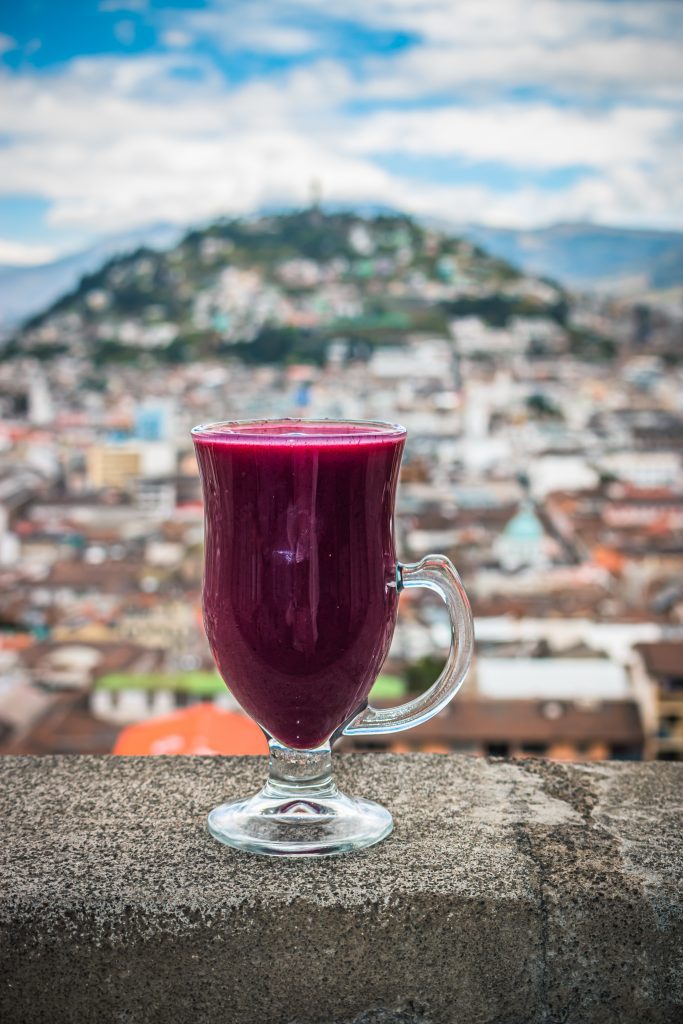
Colada Morada is a vibrant purple drink made from blackberries, blueberries, and raspberries, traditionally served during Ecuador’s Day of the Dead celebrations. We had the chance to try it in Quito’s old town, where the rich, fruity flavors and warming spices made it perfect for the occasion. It’s a unique and delicious way to experience Ecuadorian culture.

Planning trip to Ecuador?
My wife and I rented a car for 15 days and traveled from the northern part of Ecuador to the south, visiting amazing cities like Quito, Otavalo, Baños, Cuenca, and Guayaquil. Along the way, we explored iconic places such as Cotopaxi National Park, Quilotoa Lake, and many more breathtaking destinations.
Not many blogs cover traveling in Ecuador in detail, so I spent nearly three weeks creating this comprehensive Ecuador travel guide based on our trip. It’s packed with everything you need to know, and honestly, I consider it the best free travel guide about Ecuador out there.
If you’re planning a trip to Ecuador, don’t forget to use my link for discounted hotel prices through Booking.com. It’s a great way to support my blog while saving money on your accommodations!
Conclusion
Ecuador has an incredible variety of flavors to explore, with each dish offering a unique taste that reflects the region it comes from. Food tours are popular here, drawing visitors from around the world to experience Ecuador’s culinary richness firsthand.
If you’re planning a trip, don’t miss out on the chance to dive into Ecuador’s delicious gastronomy—it’s a journey all its own!


